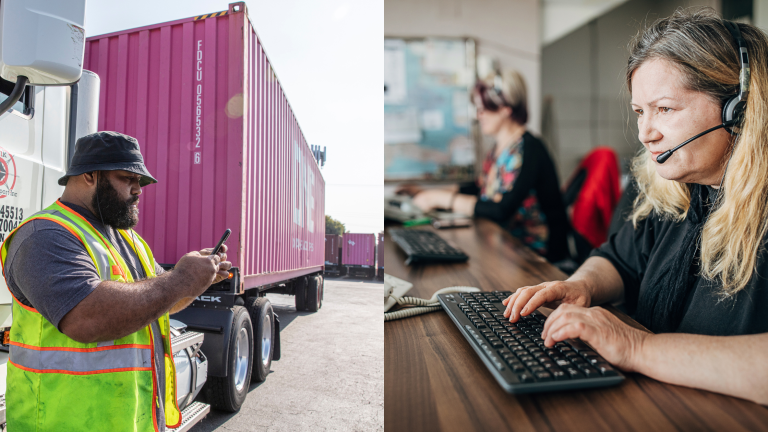The introduction of intermodal freight transport has revolutionized the freight industry. Not only is it saving time, but more importantly, it’s saving money for Chicago, one of the world’s top cities for intermodal freight transport.
Intermodal freight transport benefits companies by saving money, reducing carbon emissions, reducing highway congestion and granting access to multiple methods of transportation.
How Intermodal Freight Transport Benefits Chicago’s Economy
Due to the mass amounts of intermodal freight that moves through Chicago each year, more job opportunities through the Freight Transportation Arrangement (FTA) industry have become available for Chicago locals. In more recent years, this has made Chicago a strong contender against other freight hubs in the country, such as New York, Houston and Los Angeles.
There’s no denying the benefits of intermodal freight transport, especially when you examine the changes it has made to Chicago’s economy. Now let’s take a look at some key facts about Chicago’s intermodal system.
Facts About Intermodal Freight Transport in Chicago
Here are six key points about the intermodal freight industry in Chicago:
1. Between one-quarter and one-third of all U.S. freight originates, terminates or passes through Metropolitan Chicago.
2. Chicago houses seven interstate highways, six Class I railroads and access to water terminals on the Illinois Waterway and Great Lakes.
3. There are 21 intermodal rails located in Chicago.
4. Chicago is the nation’s busiest rail freight gateway.
5. Chicago is the third-largest intermodal container and trailer port in the world, trailing closely behind Hong Kong and Singapore.
6. Approximately 500 freight trains pass through Chicago every day — this number is expected to double by 2025.
Information sourced from the Intermodal Association of Chicago, State of Illinois and Chicago Metropolitan Agency for Planning.
It’s easy to see that Chicago has established itself as an international freight hub. Chances are, if intermodal shipment is your method of choice, your freight has moved through metropolitan Chicago at least once.
Challenges with Intermodal Freight Transport in Chicago
Weather – It’s no secret Chicago experiences some of the worst weather in the U.S. This past winter, Chicago experienced 28.6 inches of snowfall, which isn’t exactly a record, yet it’s higher than previous years. This type of inclement weather causes major delays in drayage and intermodal shipment, and costs more than just time, but money, too.
Congestion – While trains can’t get stuck on the highway like trucks, congestion is still a possibility with intermodal shipment, specifically in Chicago. Since last year, report, after report, after report have surfaced, all citing the congestion and intermodal tightness in Chicago .
Turndown Rates – As the city continues to move more freight, congestion becomes more of a challenge. Chicago’s rail trails are constantly experiencing high volume along with lack of container storage, making it difficult for some to ship intermodal at all.
Not only is this congestion in intermodal freight transport putting a strain on shipments, but also increasing the turndown rate of shipments. With intermodal capacity being so limited, trucks and rail cars are being utilized to hold freight, making it difficult for new freight to be accepted — especially if you have a large shipment to move across the country.
In a perfect system, intermodal transportation would solve the problems in the freight industry. Multiple methods of transportation along with the capability to double-stack containers should minimize, if not eliminate, the time a container would have to be stored. However, this is proving to not be the case. Congestion in Chicago is not only harming the intermodal freight transport in the city, but also across the nation — and we don’t see this problem going away any time soon.
So what can be done? Regardless of the challenges in the Chicago area, you still have a job to do. Not only do you have to move your shipment, but you also have to combat the congestion and turndown rate in Chicago, while trying to find a simple, cost-effective way to store your shipment until it’s go-time.
The Solution
Our Partners in the Chicago area — as well as across the country — have the available space you need, at the right price. We have streamlined the storage process, making it easier than ever to locate, access and store equipment. Here’s how it works:
Step One: Create an account for your company and create your profile.
Step Two: Search our Partner listings by address, date range and equipment type to find the perfect location.
Step Three: Select your location and book the space!
It’s as easy as that. Don’t let the complications of intermodal freight transport, specifically in Chicago, slow you down. Use the SecurSpace storage solution to save time and money.
Editor’s note: This blog was originally written for SecurSpace, An Overview of Intermodal Freight Transport in Chicago.




